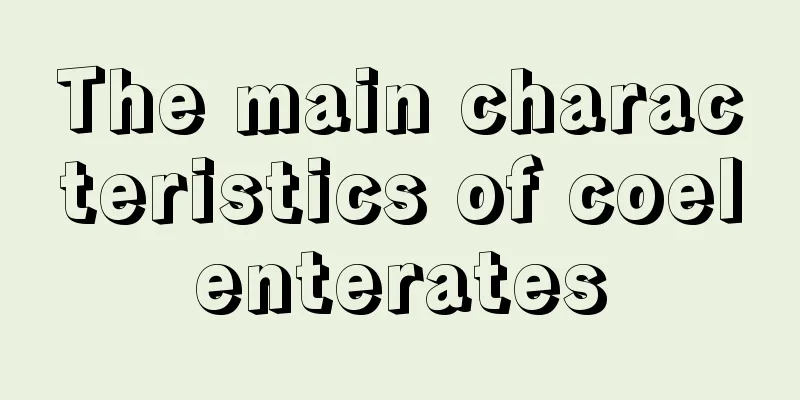The main characteristics of coelenterates

|
Coelenterates belong to the phylum Cnidaria. It was called the Cnidaria in the past, and it mainly refers to cnidarians and arthropods. It has many characteristics. Such animals are generally carnivorous, their trunks are radially symmetrical, and most of them are aquatic animals. This type of animal generally has two reproductive methods, one is asexual reproduction and the other is sexual reproduction. Let us now understand the main characteristics of coelenterates. The main characteristics of coelenterates 1. Most are carnivorous, and a small number of species obtain energy from photosynthesis of symbiotic organisms in their bodies. 2. Its trunk is radially symmetrical, it is aquatic, and most of them live in a fixed state. 3. The body wall is composed of two layers of cells, the epidermis and the gastrodermis, with a gelatinous mesogloea between them that plays a supporting role. 4. There is an intestinal cavity and a perioral part (Peristom), which is both a mouth and anus. 5. There are more than 20 species of cnidocytes, which contain nematocysts. The bristle-like protrusions at one end of the nematocyst cause the nematocyst to empty when stimulated. There are protrusions on the surface of the cnidocytes and a stick-like structure inside the cell body. The cnidocytes contain substances secreted by the gonadal body, which will be released under pressure. 6. Extracellular digestion in the intestinal lumen7. Diffuse nervous system, in the form of a network. 8. Jellyfish have sensory organs that can sense light and gravity. 9. They can be hermaphroditic or heterosexual. Reproductive methods There are two types of reproduction: asexual and sexual. Asexual reproduction often forms colonies by budding. Sexual reproduction is mostly dioecious. The gonads of Hydrozoa are formed by the ectoderm, but the gonads of Scyphozoa and Anthozoa come from the endoderm, and the germ cells come from mesenchymal cells. Marine species have a planula stage during embryonic development. The advanced features of coelenterates compared to porifera: Coelenterates are low-level multicellular metazoans that have undergone significant evolution from the more multicellular parazoans, the porifera: (1) the cells have become more clearly engineered, with primitive muscle tissue and a nervous system, indicating that this type of animal has developed from the cellular level to the tissue level; and (2) in terms of phylogeny, it has progressed from a single-celled protozoa to a metazoan with a true two-germ layer. This was a major leap in the history of animal evolution. |
>>: My stomach growled in the morning
Recommend
What are the main causes of bladder cancer?
Bladder cancer is a very common malignant tumor i...
What can an electric baking pan do
The electric baking pan is a small household appl...
Can surgery be performed on patients with high astigmatism?
High astigmatism is a common retinal disease. Whe...
How to prepare mustard oil, its medicinal value cannot be ignored
Mustard is the powder of crushed mustard seeds. T...
What is fish maw? It has many benefits
Fish maw is a very nutritious food and a luxury f...
Briefly describe the causes of nasopharyngeal carcinoma
Nasopharyngeal carcinoma is a type of cancer and ...
Specific analysis of the causes of bone tumors
The etiology of bone tumors is very complex. Gene...
Can I drink alcohol after getting rabies vaccine
After getting the rabies vaccine, there are actua...
How to treat dryness and sweating
Everyone's physical condition is different. S...
Postoperative care tips for colon cancer
Colon cancer is also a type of intestinal cancer....
How to treat the small red bumps on the glans?
There are some small red bumps on the glans penis...
How to treat sinusitis
I have been having headaches, nasal congestion, r...
What tests should be done for prostate cancer? There are four tests for prostate cancer
The prostate is a very important organ for men. I...
Methods to reduce heat
The main causes of getting angry are some things ...
Can stomach cancer be cured?
Among the most common tumors in my country, gastr...









